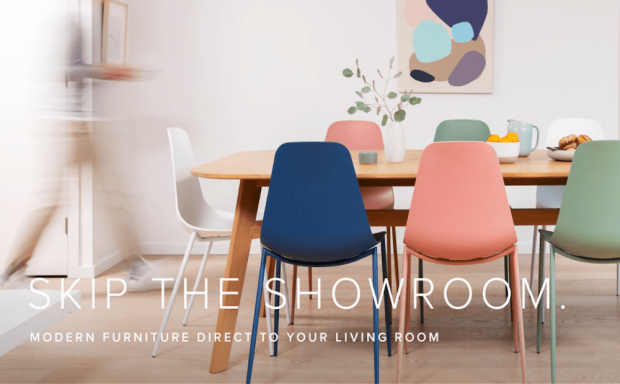How Article Wants To Conquer Furniture Delivery’s Last Mile

There is no shortage of places to buy furniture online.
Middle-market consumers have Wayfair, there’s Chairish for those who want designed or antique furnishings, and there are startups like Burrow, Maiden Home, The Inside, and Interior Define. They can all bring a couch — and associated home furnishings — to your front door, with no stop-over at a furniture showroom required.
Article is part of that up-and-coming class, though its story is a bit different than its fellows in the field. A collaboration between Aamir Baig, Fraser Hall and twins Sam and Andy Prochazka, the Vancouver-based company launched in May 2013 after the four came up with the idea over pancakes at an IHOP. Andy Prochazka, now Article’s chief marketing officer, had discovered while working in China the really massive gaps between production costs and retail pricing.
“It was a big surprise to see how production costs translate to retail pricing costs in North America. We started chatting and looking at this industry. We asked, ‘What can be done to make the whole process more efficient?’” CEO Aamir Baig told Forbes.
Article launched to do just that. The brand designs and manufactures furniture which it sells direct to consumers digitally. The aesthetic is familiar, particularly to the Instagram interior-design crowd — it offers mid-century and contemporary furniture designs, with a big focus on with clean lines in a variety of colors and fabrics.
And if it seems Article is suddenly everywhere, that’s likely owing to two factors.
The first is that the brand released its first-ever television marketing campaign a few months ago — meaning the odds are quite good they’ve been on your television screen lately. Second, Article growth, particularly in the last few years, has been brisk. In 2016, the firm’s revenue was around $50 million, by 2017 that had doubled to $100 million and it was the firm’s expectation that the 2018 would double again $200 million. Mover, Article is profitable and has only raised minimal funding through its Series A and B rounds.
“We have been disciplined operators,” Baig says.
And that focus on discipline, he noted, is particularly important when it comes to the control, expansion and development of its supply line. Because the reality is that Article designs, though aesthetically pleasing, are not the only mid-century flavored contemporary offerings for sale in the digital space. But what Article does — and according to many reviews, does better than any other player in the game — is not just design the furniture well, but actually it deliver its products in a friction-free manner as well.
“What we often see is that while it is easy to order a couch online, actually taking delivery is a whole other issue. We don’t hire out third parties to do our delivery — most of our competitors do. At best that means what a customer ordered might end up in their house in the right room — at worst it can mean your couch is left on the sidewalk outside your fourth store walk-up.”
Article, from it inception, has believed it can do and offer better — and that better control of shipping and its costs would ultimately amount to savings that can be passed on to customers.
The latest innovation in that supply chain was Article’s recent launch of its in-house last-mile delivery solution in New York and Los Angeles. The deliveries will be handled by the company’s Article Delivery Teams for their “final mile” of delivery — bringing items from a distribution center directly to the buyer. Those teams, according to Article, are staffed by people who have been both heavily trained in customer service, vetted to be in cutomers’ homes and who have demonstrated familiarity with all the furniture that Article sells. The teams are also trained to function flexibly: If a customer has a problem — they need to ship a different product, for example — Article’s delivery team will handle it on the spot.
Early indications are the service is working. According to Article’s internal data, in areas where the program has piloted, negative customer feedback was reduced by up to 83 percent. The company says it plans to expand the program to additional major North American cities over the next 18 months.
